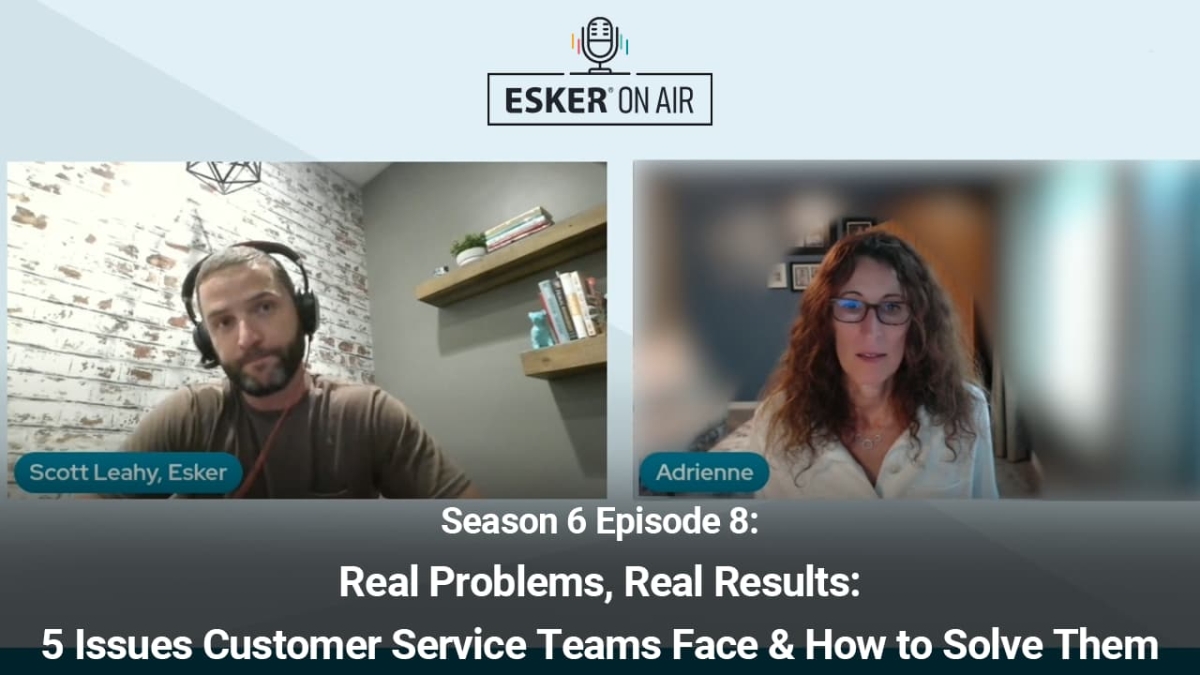Title
Esker on Air S6 E8: 5 Customer Service Problems You Can Actually Fix with AI

Customer service teams are no strangers to stress. Between inboxes flooded with customer questions, bottlenecks delaying order responses, and claims getting bounced back and forth between disconnected teams, it’s easy to feel like you're constantly playing catch-up. But what if the most common customer service problems aren’t just inevitable — they’re fixable?
Let’s unpack five of the most frustrating challenges customer service teams face today and learn how companies in manufacturing, healthcare, tech and beyond are using AI-driven automation to overcome them. You’ll see that AI in customer service isn’t hype — it’s a competitive advantage.
Problem #1: “We’re drowning in inquiries.”
Sound familiar? Teams often spend more time routing messages than resolving them. Fuchs Lubricants, a global leader in industrial lubricants, was once in the same boat. With Esker’s AI-driven inquiry classification and sentiment analysis tools, Fuchs reduced customer inquiry response times from 24-48 hours to just 6, automatically (and correctly) classifying 84% of incoming emails and eliminating manual inbox triage. That freed up reps to focus on delivering real value to customers, not just moving emails around.
Problem #2: “Our response times are too slow.”
In today’s always-on world, a delayed response can cost you business. MCR Safety tackled this head-on by automating inquiry routing and order intake. Their results? A 91% order automation rate, a 63% drop in data entry errors, and response times that dropped from 12-24 hours to near instant. Even better? They used the time they saved to create new roles focused on proactive customer engagement.
Problem #3: “We can’t scale our order process.”
Growth is great — until your processes can’t keep up. Global tech powerhouse NVIDIA saw its order volume skyrocket as demand for its technology surged. Using Esker Order Management, NVIDIA slashed processing time for repeat orders from five minutes to just five seconds. That’s a 98% reduction in time and a 50% cut in manual effort — all without sacrificing customer satisfaction or overburdening staff.
Problem #4: “We don’t know what’s slowing us down.”
Visibility is key to fixing what’s broken. Sanofi Spain, a major healthcare company, centralized its issue and claims management workflows with Esker to gain 100% visibility across the customer experience. By automatically tracking root causes and correlating them with order data, they were able to cut claims processing time in half and reduce order errors across departments.
Problem #5: “Our claims process is manual and messy.”
If your team dreads claims, you’re not alone. At GBfoods, disconnected tools and manual processes created bottlenecks and burned time. With Esker, GBfoods centralized incoming claims, automated classification and cut claim processing time by 50%. The result? 500 hours saved annually and a five-year streak of 98%+ customer satisfaction for order delivery.
Automation That Actually Works — Across the Board
These aren’t hypothetical wins. They’re real outcomes from real companies. And they’re all powered by Esker, a purpose-built suite of automation tools designed for the unique challenges of B2B customer service.
Want the full story?
Listen to the podcast: Season 6, Episode 8 of Esker On Air
Subscribe to new posts
